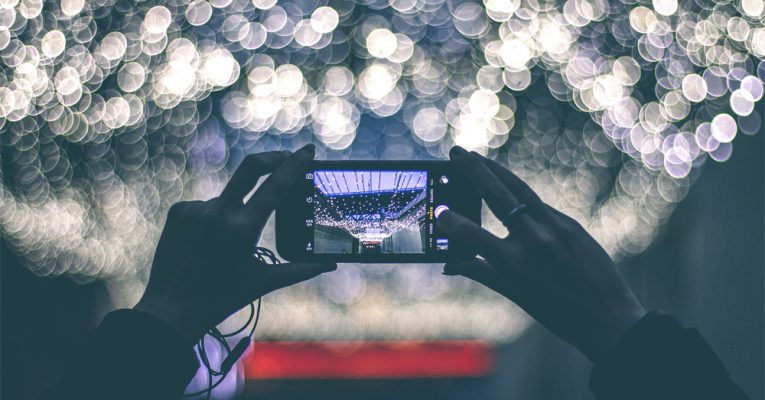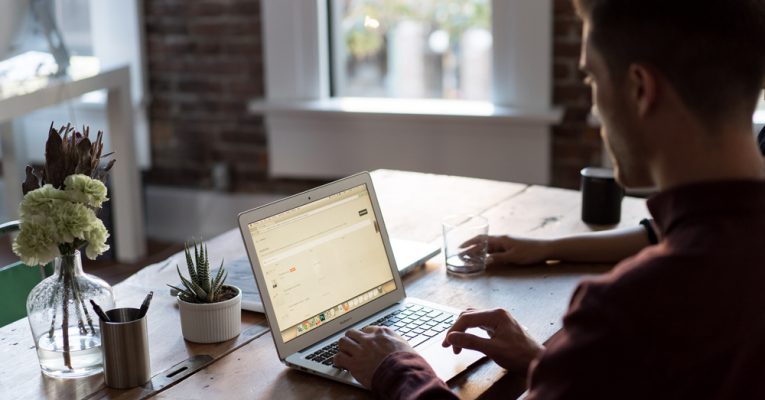
10 Tips to Organize Your Camera Roll
July 1, 2019
Guest blog by Kacey Mya, the blogger behind The Drifter Collective
Ah, the dreaded “iPhone storage almost full” message popped up again — preventing you from taking new photographs to your heart’s content. Who likes seeing that alert pop up on their phone? Sure, external storage exists, but what if you prefer to keep certain fav pics for important tasks like sharing the fifth item in your roll to a social media post about kitty cats?
If you’re like me, most of the your phone’s storage consists of pictures. How can you keep your camera roll organized to allow you ample space for photographing new adventures without having to pause to pull out a USB device? By using backup apps, uploading photos to devices with larger storage spaces and printing out your favorites, you can preserve precious phone space while still snapping selfies a mile a minute.
1. Delete Lousy Shots Immediately
Anyone who has ever tried to snap a pic of Fluffy doing something adorable knows they have to click at least 20 times to get one decent photo. Before you know it, your phone storage dwindles megabyte by megabyte.
When taking pictures, delete the ones of your wayward thumb immediately, and do the same with the ones where Fido turned his head at the last second, transforming into a demonic-looking blur. You may have to wait till you get out of the sun to delete pics if you’re shooting outdoor panoramas but do so once you return to your vehicle.
2. Adjust Your Settings
On most cellular devices, deleting an app from the home screen frees up no space at all because the app remains running in the background. Both iPhones and Android models have certain pre-installed apps you cannot delete, but you can disable those you no longer use to gather some extra storage space.
- iPhone: Tap the Settings icon. Scroll down to General and go to iPhone and Cloud Storage. A list of apps will appear — click on each one, hit “Offload App,” and then delete it to uninstall entirely.
- Android: Go to the apps screen, tap the Uninstall Updates button and hit “Disable” next to apps you no longer use.
3. Upload to the Cloud
If your phone isn’t set to automatically back up to the Cloud, adjust it to do so. You can upload to Apple’s Cloud or Google Drive on Android devices. Secure file sharing apps allow you to share photos and other important documents without fear of hackers’ prying eyes spying them.
4. Utilize Space Storing Backup Devices
Various backup devices ranging anywhere from $50 to $200 exist for Android and iPhones online and in stores. These keep your photos secure while freeing up space on your device itself.
5. Create Albums Right Away
Arranging your pictures into albums an help you find the ones you use most often easily. You can create these on your phone using Google Photos, or you can tether your device to your computer to create an album there.
6. Make Montages of Shots
One photo montage uses less storage space than five separate photos. Download a free photo collage app and begin virtual “scrapbooking” to save on space. Once you combine the pics, delete the originals.
7. Let Social Media Act as Storage
Even if you don’t wish to share all your photos, you can nevertheless upload them to social media without making them public. Set Facebook settings for uploads to “Only Me” by default and change only those pictures you want to share later. You also can set your Instagram account to private.
8. Schedule Regular Maintenance
Performing regular device maintenance is a smart decision, regardless of the amount of storage space on your phone. After all, keeping devices up to date helps keep all of your information — not only your photos — secure. Considering the vast amount of information, we store on our phones (like banking passwords, credit card info, etc.), getting into a routine of updating all equipment — phones, computers, video consoles and home automation systems — on a weekly or bi-weekly basis makes solid sense.
9. Keep Only Favs on Devices
I don’t know about you, but I’m a total sucker for replying with an adorable pic of my kitties when a friend on social media asks people to share the third or fifth photo in their roll (of course I have the cutest pets in the world, and so do you!). It’s tempting to delete all your pictures once they’re uploaded but do keep some on your phone for fun and for sharing during long rides on the bus or subway.
10. Invest in a Photo Printer
A high-quality printer can turn your favorite pictures into art worthy of hanging on your walls. Invest in a photo printer, and you’ll never worry about losing a beloved pic again. No printer? Most office supply stores will print high-quality photos for you for a small fee.
Turning Photos into Art While Saving Phone Space
Our phones ensure we have a camera with us everywhere we go, and most of us adore this feature. However, snapping away every time we head out with friends means burning through our storage space quickly. Never fear — by following the above tips, you can free up space and keep your treasured memories at your fingertips.
Subscribe to the Organize-It blog for more organization tips and tricks. Learn more at Organize-It.com

7 Reasons to Organize Your Digital Life
June 24, 2019
Guest blog by Kacey Mya, the blogger behind The Drifter Collective
Clutter creates disorganization. It impedes your productivity and makes you feel exhausted. But clutter isn’t just physical stuff like junk mail, dirty clothes and piling dishes — it can be digital items too. Spam email, saved documents, cluttered social media feeds and so much more.
Luckily, these digital tools can also be used to create an effective organization system that works for you.
1. You Can Control Your Feed
Social media is no fun when your feed is clogged with posts, stories and ads you don’t really care about. Go through your various accounts — Facebook, Twitter, Instagram, Pinterest, etc. — to see what you can cull. Go through your online friends and cut those you don’t care to interact with. Keep in mind others can add you to groups without your approval, meaning your feed could be clogged with ads and posts you didn’t sign up for. Go through your saved groups and pages to unsubscribe from those you aren’t interested in.
2. You Can Take More Photos
Have you ever gone to take a photo with your smartphone or camera only to realize the memory is full? It can be a bummer, especially when you have a great shot lined up. Prevent future photo mishaps by organizing your photos and deleting those you don’t want. Take advantage of the cloud to create a storage folder that doesn’t take up precious space on your device. Or invest in an external hard drive that allows you to store digital files separately.
3. You Can Prioritize Your Emails
When your inbox gets clogged with emails, it makes you more susceptible to spam and data-stealers. Delete emails from senders you don’t recognize. Some major red flags are asking you to provide or verify personal information, suspicious links or attachments and copious grammatical errors. Run-of-the-mill spam — business ads promoting a product or service — can be avoided by opening the emails and clicking the “unsubscribe” link at the bottom. This should prevent that specific business from contacting you further.
4. You Can Track Your Finances
With the right digital tools, you can declutter your life and take control of your finances. Use an Excel spreadsheet to keep track of your earnings, savings and bills due. Use a calendar with automatic notifications to remind you of payment due dates. Set up an automatic payment plan through your bank or credit card to avoid the stress of late fees. Keeping track of your budget manually can be a hassle, but with a digital solution, the process is simple and streamlined.
5. You Can Declutter Your Computer
Does your computer run slower than when you first bought it? Chances are the system has become bogged down by too many files. Go through your computer’s various folders, including downloads and desktop items, and delete anything you no longer need. Files of immediate importance can be kept on your computer while record-keeping information can be stored on a flash drive or external hard drive. You can also defrag your computer, which reduces the number of fragmented files on your computer stored in separate locations.
6. You Can Turn Off Notifications
Notifications are annoying and can pop up on your smartphone, desktop and internet browser. It seems like there’s no escape. Luckily, there is a way to completely turn off notifications — or at least minimize interruptions from the ones you don’t care about. On your smartphone, go into your settings and click on notifications. There, you will see all the apps with permission to send notifications to your phone. On your computer, open up the settings in your internet browser to determine which websites have access to allow pop-ups.
7. You Can Protect Your Passwords
Unique passwords are necessary to protect your personal information, including bank accounts, credit cards, social media profiles and so much more. But you don’t have to manually keep track of all of your passwords or save them directly to your browser, making it easy for anyone to gain access. Instead, use a smart password manager, like LastPass or Sticky Password, to safely keep track of all your accounts.
How to Organize Your Digital Life
Digital clutter can be just as frustrating as physical clutter. Sure, it may not be invading your home, but it is taking over your computer and making you more susceptible to spam and viruses. Take action now by following the seven tips above to organize your digital life.
Start simple by going through your computer files and moving unneeded data to an external hard drive or the cloud. Open your device settings to turn off notifications from unwanted websites and apps. And protect your passwords — and your personal information — with a smart password manager.
Subscribe to the Organize-It blog for more organization tips and tricks. Learn more at Organize-It.com



